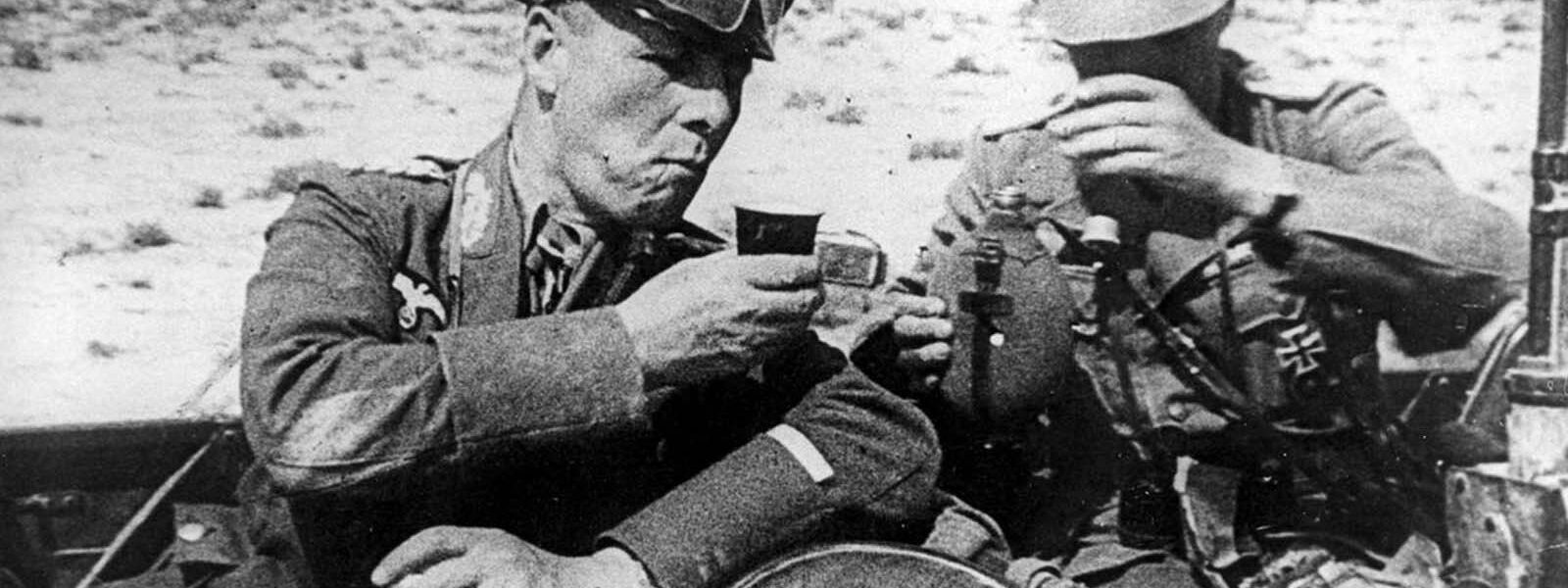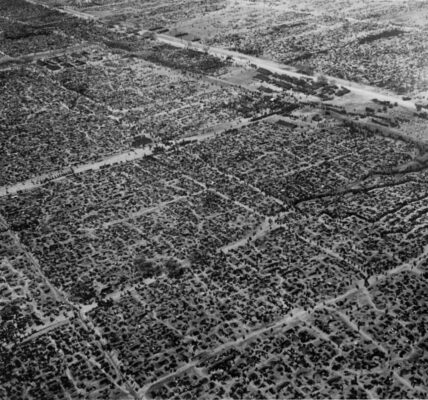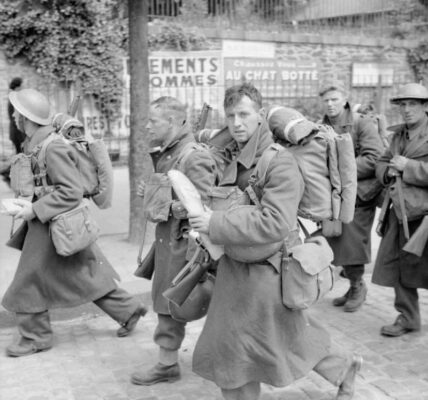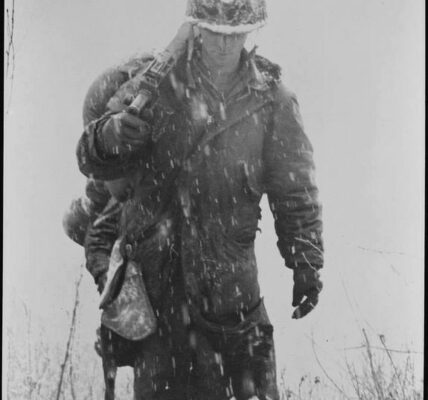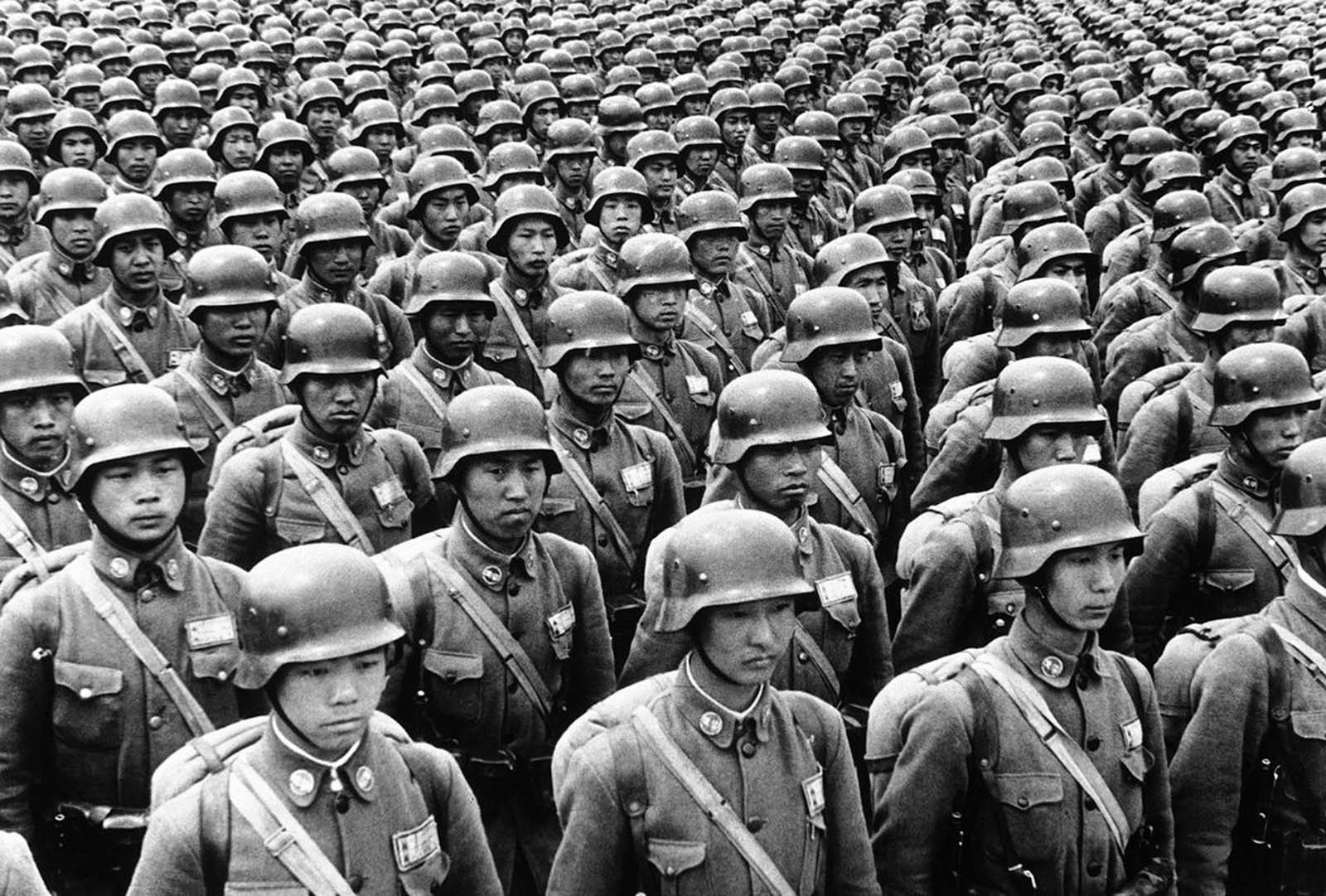
In the fourth year of their war against Japan, the Chinese armed forces strengthened their air force, produced their own weapons, and trained their officers in the methods of modern warfare. Pictured here are Chinese cadets in full combat dress, preferring the German steel helmet, at a parade somewhere in China on July 11, 1940.
On April 9, 1940, Germany simultaneously invaded Norway and occupied Denmark, and the war began in earnest. On May 10, German troops marched through Belgium and the Netherlands in a war known as “Blitzkrieg.”
Three days later, Hitler’s troops crossed the Meuse and attacked the French forces at Sedan, which lay at the northern end of the Maginot Line, a complex chain of fortifications built after the First World War and considered an impenetrable defensive barrier.
On June 14, German troops marched into Paris; two nights later, a new government under Marshal Philippe Pétain (France’s First World War hero) requested an armistice.
From the end of 1940 to the summer of 1941, the conflicts between the nations escalated into a true world war. Both the East African Campaign and the Western Desert Campaign began during this period, with primarily Italian and British forces fighting back and forth in the deserts of Egypt and Libya, and from Ethiopia to Kenya. The Tripartite Pact—a declaration of cooperation between Germany, Italy, and Japan—was signed in Berlin.
Japanese troops occupied Vietnam, established bases in French Indochina, and continued to attack China. Mussolini ordered his troops to attack Greece, triggering the Greco-Italian War and the Balkan Campaign.
The Battle of Britain continued as the German and British armed forces bombed and naval each other. The United States began its Lend-Lease program, supplying $50 billion worth of weapons and equipment to the Allied nations.
And a threatening new phase began when the Germans established walled ghettos in Warsaw and other Polish cities, rounding up Jews from the surrounding areas and forcing them to move into these enclaves. Here you will find a collection of interesting and rare images documenting this period of World War II.

British infantrymen in position in a shallow trench near Bardia, a Libyan port occupied by Italian forces that fell to Allied forces on January 5, 1941, after a 20-day siege.

On May 15, 1941, against the backdrop of a rock formation somewhere in East Africa, a British bomber takes off, leaving a trail of smoke and sand.

Warships of the British Mediterranean Fleet bombarded Fort Cupuzzo in Bardia, Libya, on June 21, 1940. An official photographer was on board one of the battleships, taking pictures during the bombardment. Pom-Pom anti-aircraft guns were ready for use.

An aerial photograph of Tobruk, Libya. Burning gasoline depots can be seen after Allied attacks in 1941.
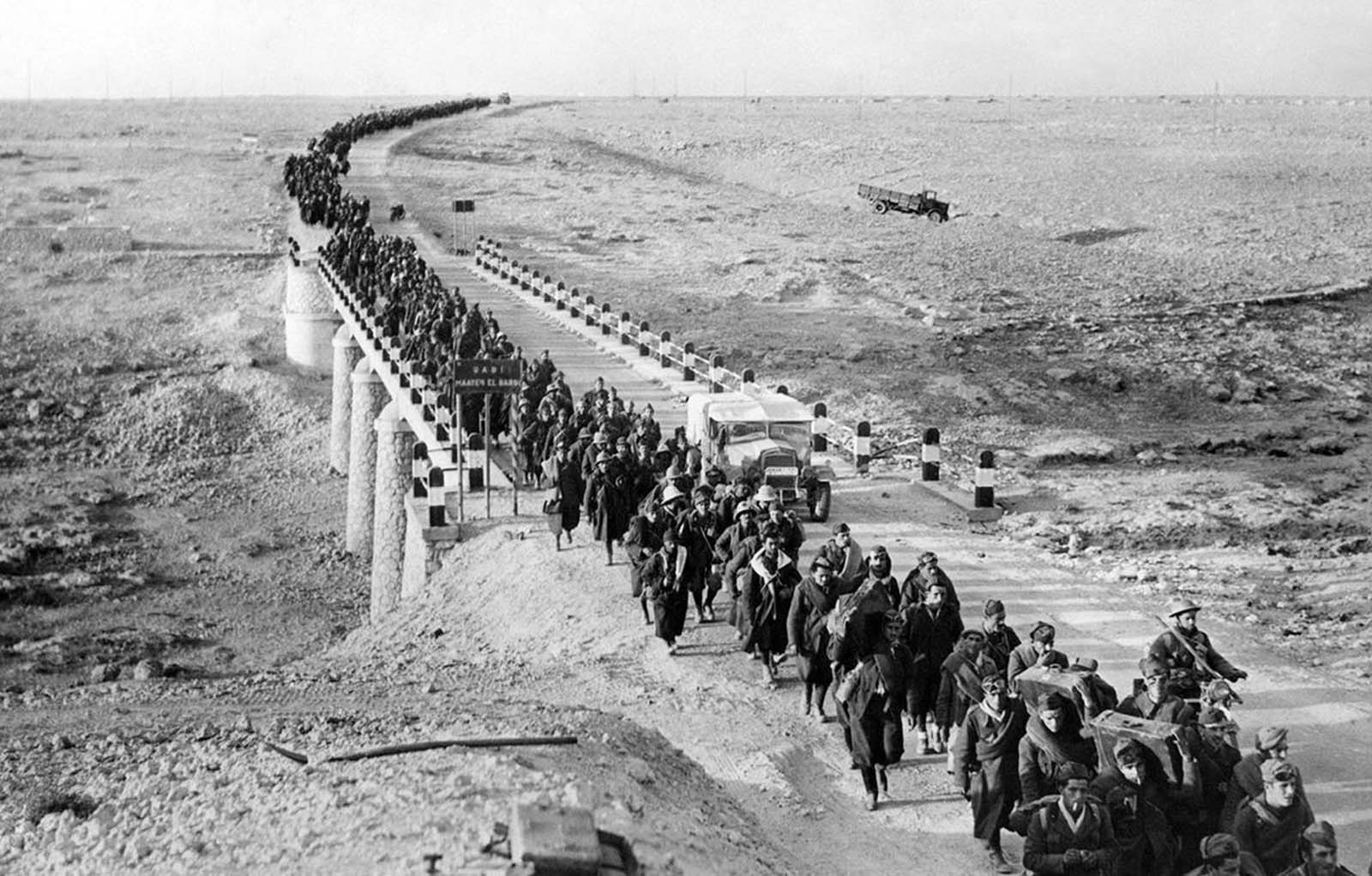
Bardia, a fortified Libyan seaport, was captured by British forces, taking with them more than 38,000 Italian prisoners, including four generals, and large quantities of war material. An endless stream of Italian prisoners left Bardia on February 5, 1941, after the Australians had taken possession of it.

A squadron of Bren Gun Carriers manned by Australian Light Cavalry rolls through the Egyptian desert in January 1941. The troops were conducting maneuvers in preparation for the Allied campaign in North Africa.

This RAF Middle East Command ordnanceman prepares a bomb for use against the Italian forces fighting in Africa. This large bomb hasn’t been detonated yet, but when it is, it will be ready for its deadly task. Photo taken on October 24, 1940.

The moment on December 28, 1940, when a patrol of British Hurricane fighters over a sector in the Middle East broke formation to attack enemy aircraft.

This photograph, taken from a British fighter plane during the attack on Tobruk, shows the Italian cruiser San Giorgio burning amidships in Tobruk harbor on February 18, 1941. The ship was scuttled, its decks appearing to be covered with wrecked equipment.

The body of an Italian soldier lies where he fell in battle on February 11, 1941, in a stone-walled fortress somewhere in the western Libyan desert.
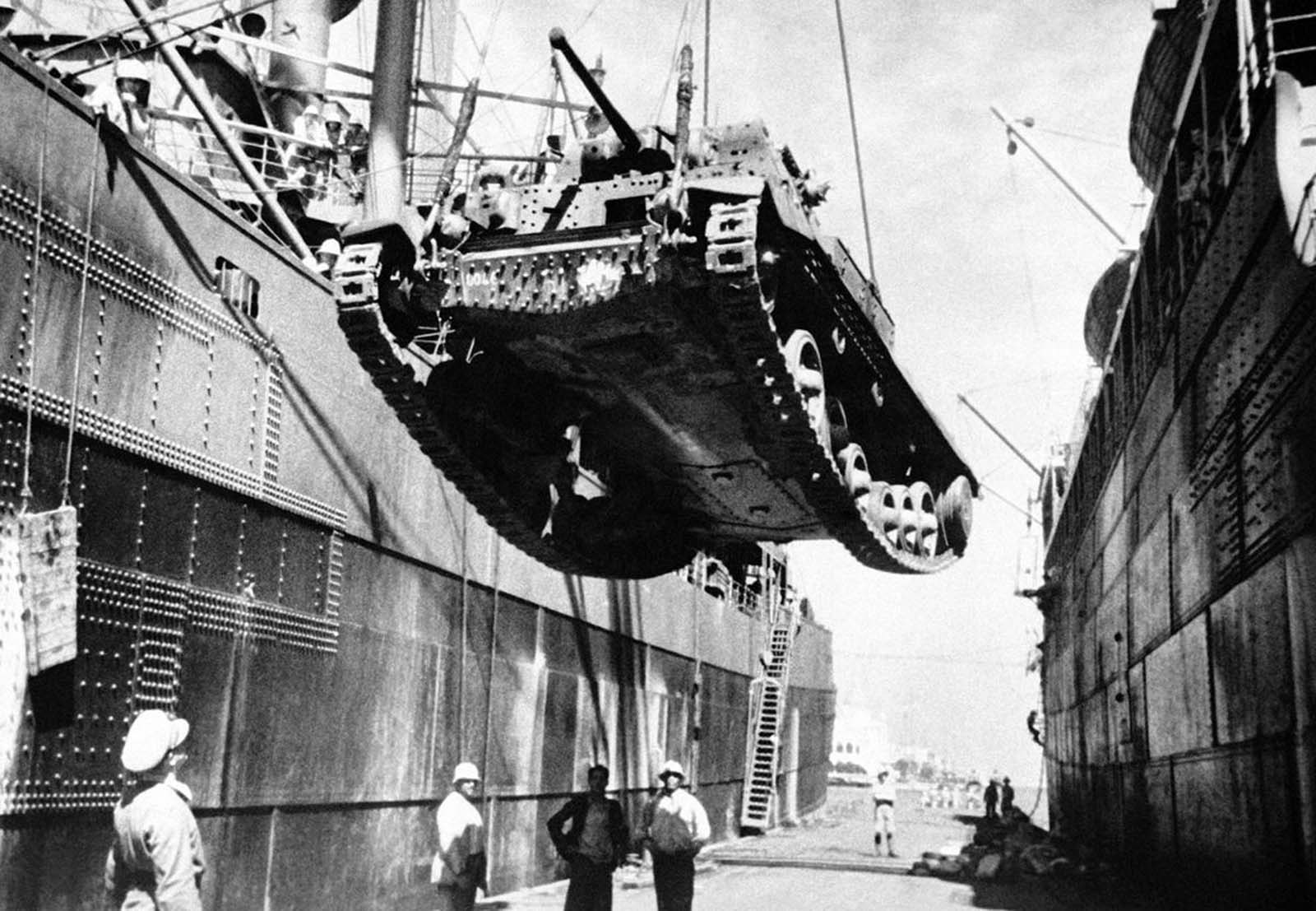
On November 17, 1940, a British cruiser tank is unloaded in an Egyptian port. It is one of numerous tanks that had recently been shipped there by the British armed forces.
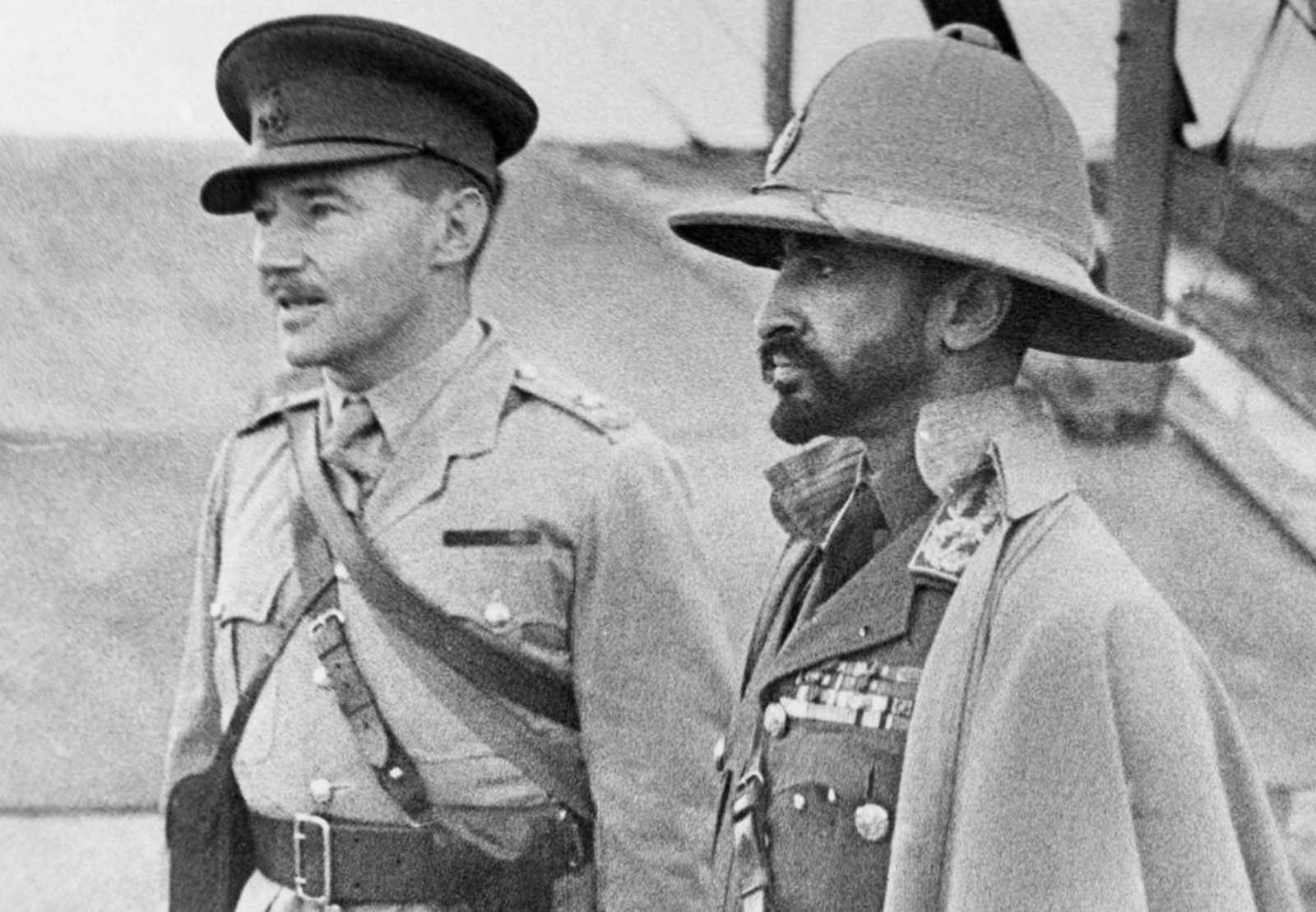
Haile Selassie (right), Emperor of Ethiopia, whose empire was annexed by Italy, returns on February 19, 1941, with an Ethiopian army recruited to support the British in Africa. Here, the Emperor inspects an airport, an interpreter at his side. On May 5, 1941, after the Italians were defeated by Allied troops in Ethiopia, Selassie returned to Addis Ababa and resumed his position as ruler.

Cameron Highlanders, a Scottish infantry regiment of the British Army, and Indian troops march past the Great Pyramid in the North African desert on December 9, 1940.

Field Marshal Erwin Rommel, commander of the German Afrika Korps, drinks from a cup with an unidentified German officer as they sit in a car during an inspection of German troops sent to Libya to support the Italian army in 1941.

A huge German Panzer IV, part of the German expeditionary force in North Africa, stops in the Libyan desert on April 14, 1941.
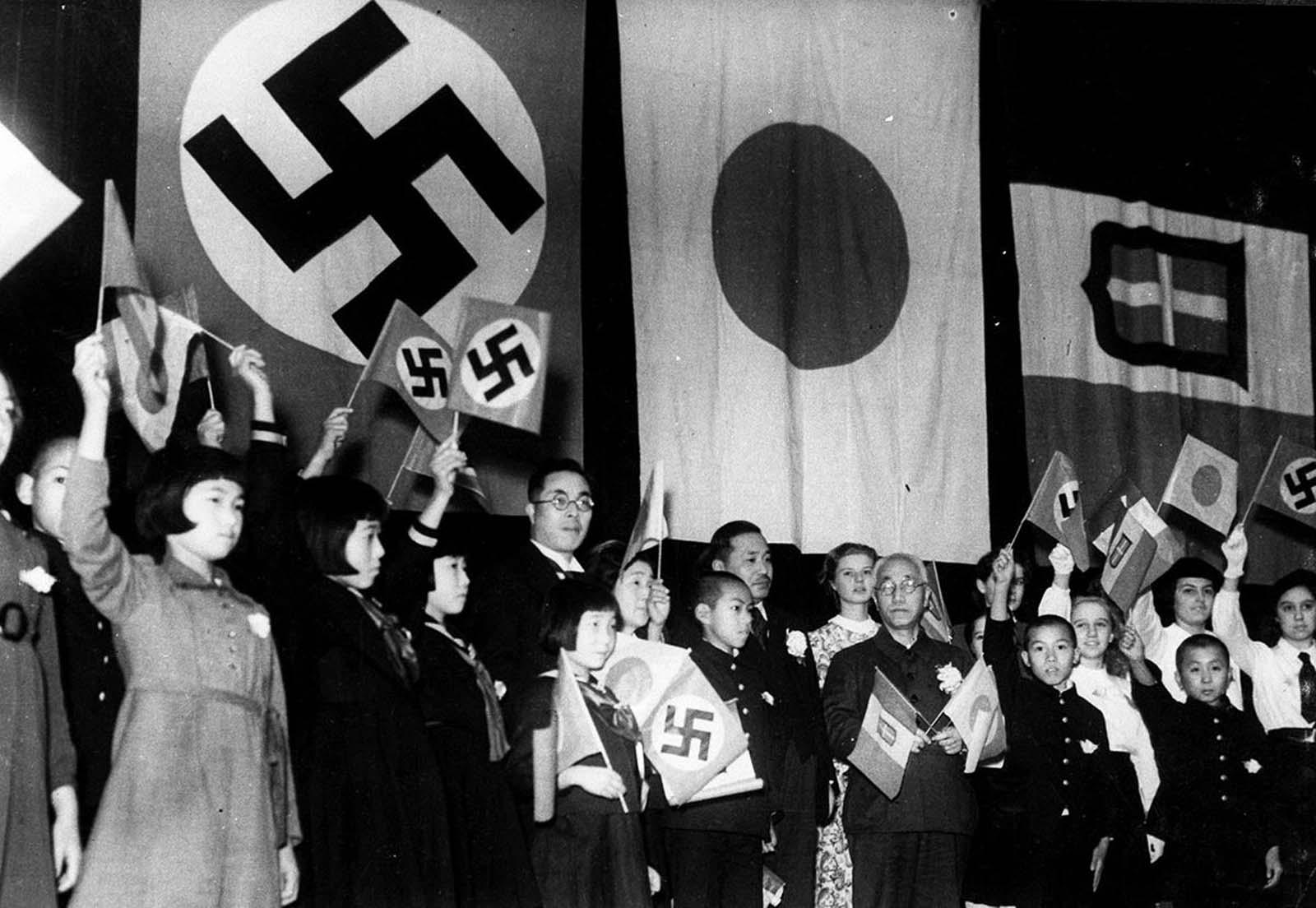
Children from Japan, Germany, and Italy gather in Tokyo to celebrate the signing of the Tripartite Alliance between the three nations on December 17, 1940. Sponsors included Japanese Education Minister Kunihiko Hashida (center), holding crossed flags, and Tokyo Mayor Tomejiro Okubo.

A Japanese bomber in flight on September 14, 1940. Below, smoke rises from a group of bombs dropped over Chongqing, China, near a bend in the Yangtze River.

Chinese soldiers operate a sound detector that controls the fire of 3-inch anti-aircraft guns around the city of Chongqing, China, on May 2, 1941.
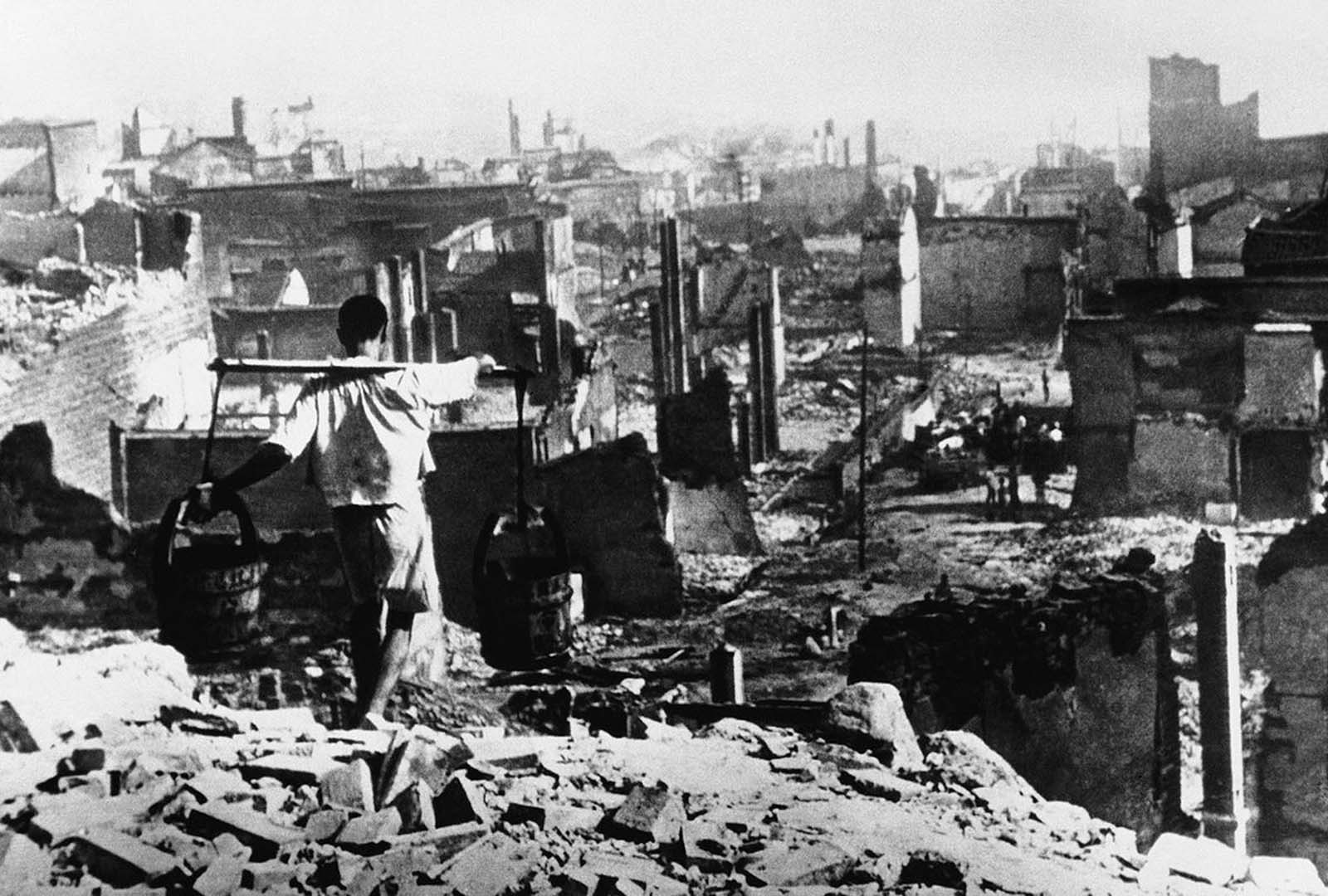
Despite facing nothing but devastation, this Chinese water carrier carried on even after four days and nights of air raids by Japanese fighter planes in Chongqing, China, on August 10, 1940.
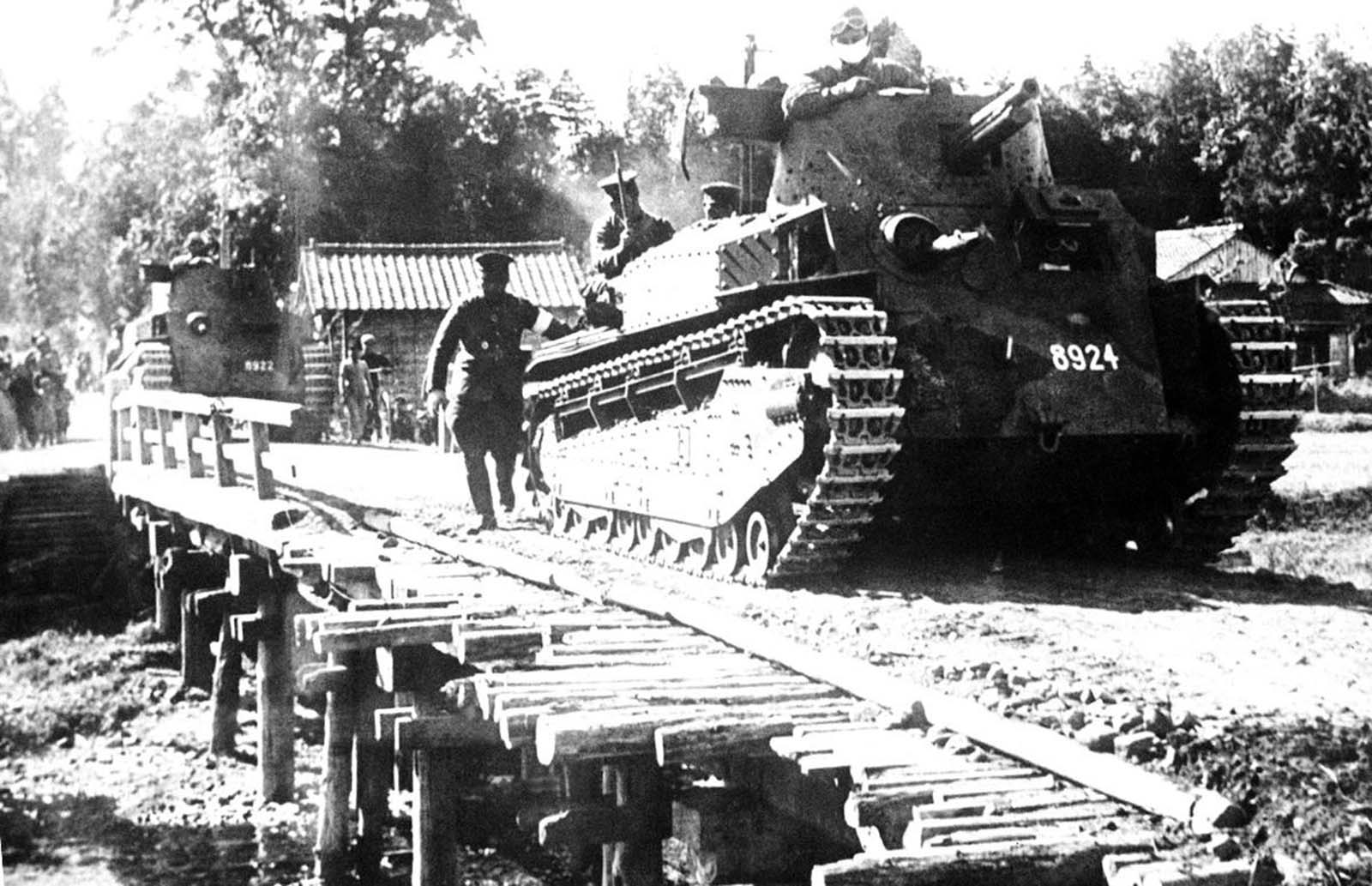
On June 30, 1941, a Japanese tank drives over an emergency bridge somewhere in China.

This aerial photograph shows the Japanese Home Fleet in battle formation off the coast of Yokohama, Japan, on October 29, 1940.

On September 26, 1940, French colonial troops withdraw from Haiphong in the Tonkin region of French Indochina when Japanese occupation forces take over the port and city under the terms of the Franco-Japanese agreement in which Vichy France granted military access to Japanese forces.

Italian bombers en route to a combat mission on the Albanian-Greek border on January 9, 1941. The Italian armies had launched an invasion of Greece from Albanian territory on October 28, 1940.

Royal Air Force bombers carry out an attack on the Italian-occupied port city of Valona in Albania on January 11, 1941.

During the occupation of Greece in May 1941, a group of German soldiers passes through a Greek village.
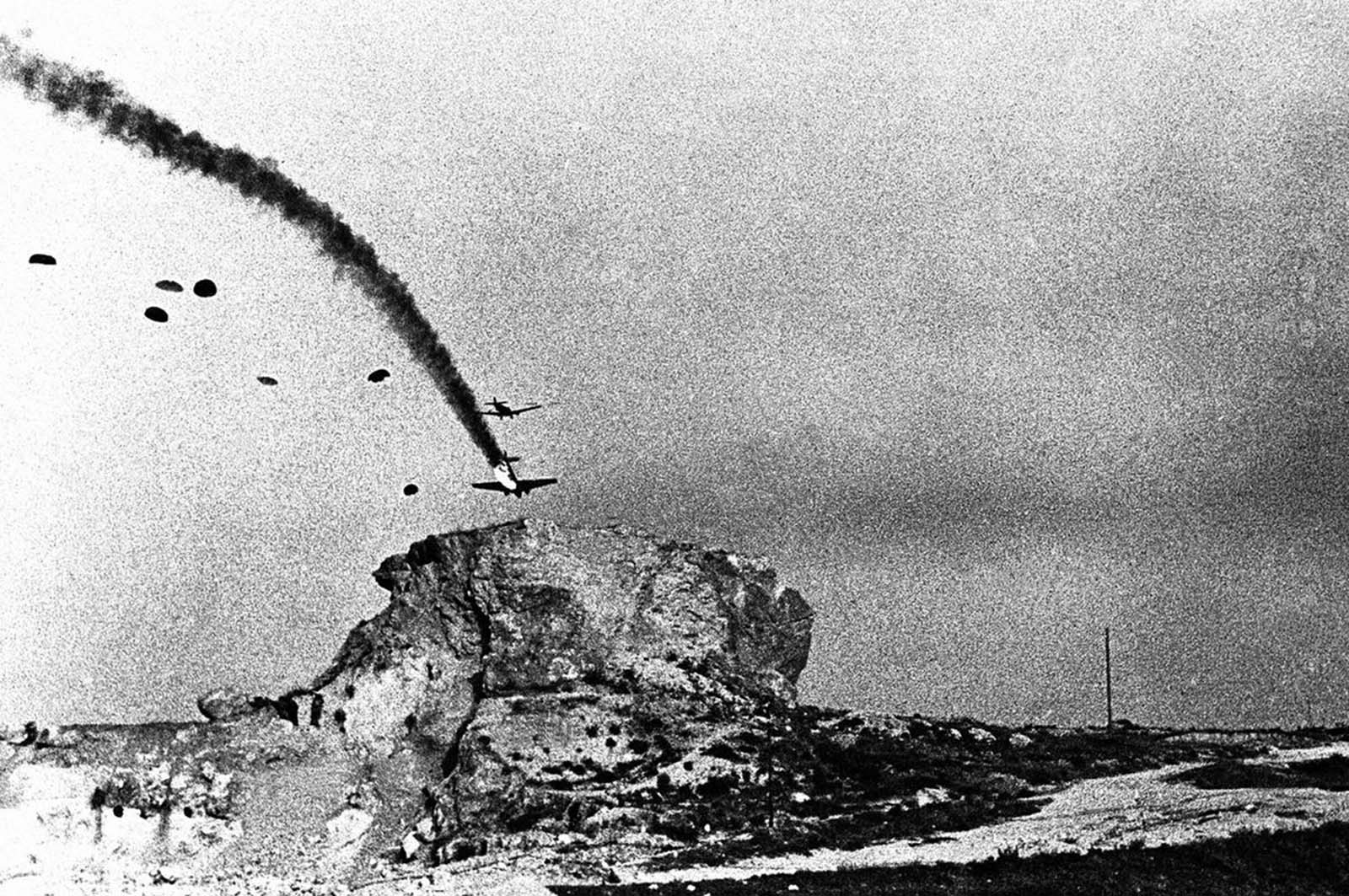
The price paid by the German air invaders on the Greek island of Crete. While fighter planes patrolled the area, troop transport aircraft followed, escorted by bombers. A paratrooper crashed here on June 16, 1941.
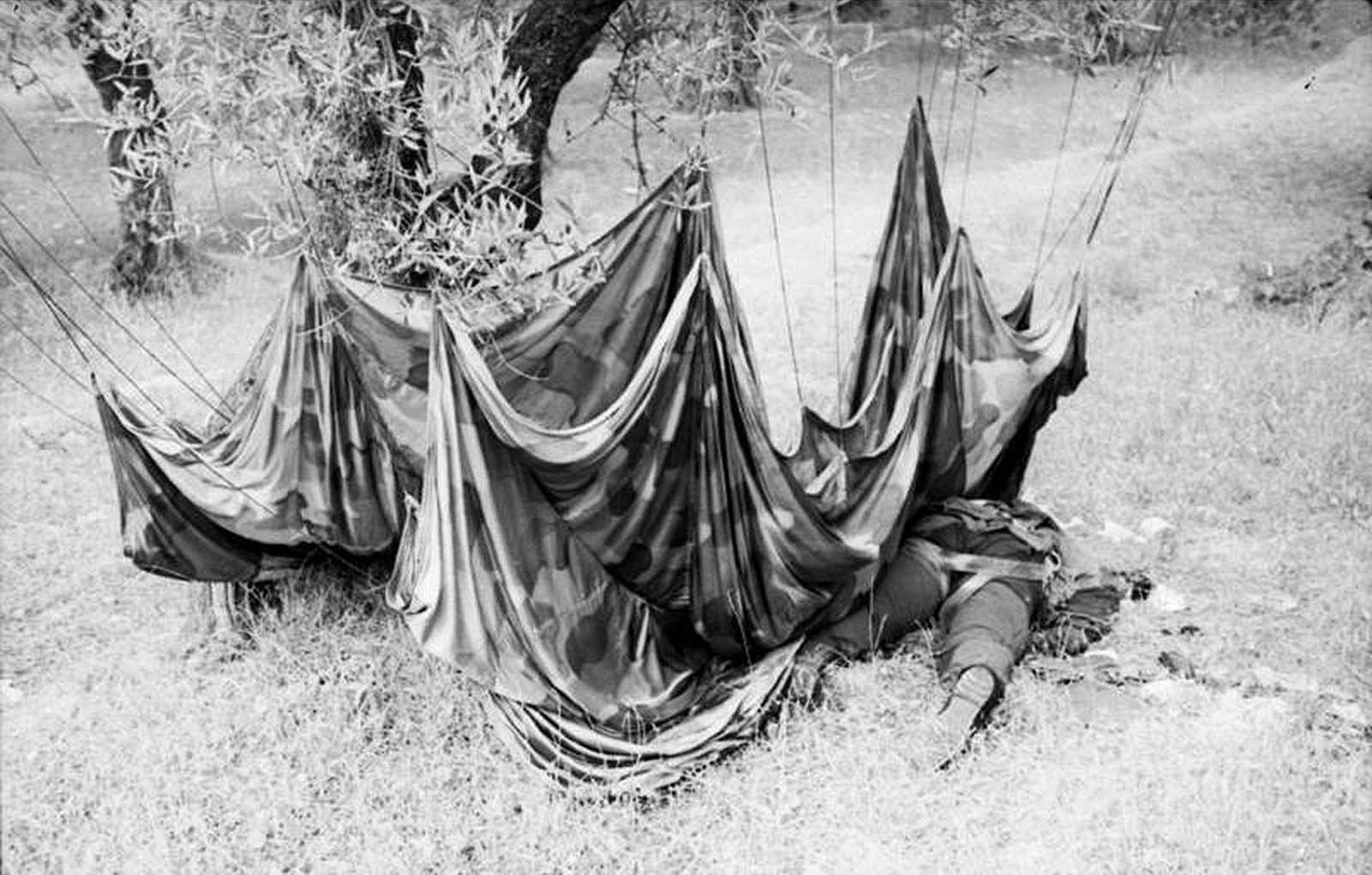
A fallen paratrooper and his parachute on the island of Crete, early 1941.
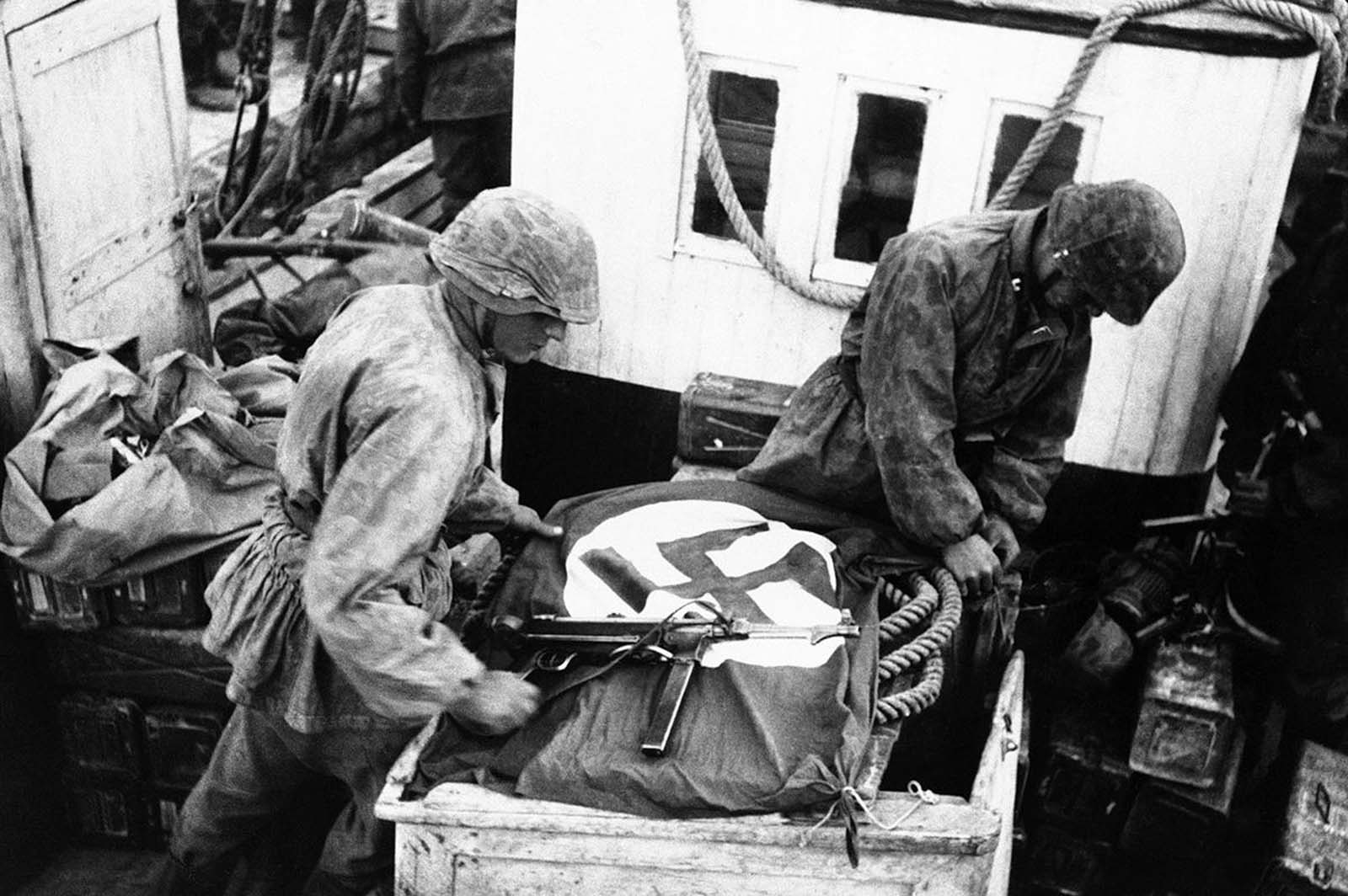
To alert their own air force to their presence, soldiers sprayed the swastika on the boats used by SS troops to cross the Gulf of Corinth in Greece on May 23, 1941.

A view from the roof of St. Paul’s Cathedral in London in January 1941 shows the famous building engulfed in fire on the night of the Great Blitz. Destroyed buildings are visible everywhere, and the tower of the Old Bailey with its Statue of Justice still stands at the top left.

The dramatic and tragic scene when the Cunard White Star liner Lancastria sank on August 3, 1940. The Lancastria was evacuating British citizens and troops from France and had taken on board as many as possible for the short voyage—an estimated 4,000 to 9,000 passengers were on board. A German Junkers 88 aircraft bombed the ship shortly after departure, and it sank within 20 minutes. While 2,477 were rescued, an estimated 4,000 others lost their lives from bomb blasts, shelling, drowning, or suffocation in oil-polluted water. Photo taken from one of the lifeboats as the liner heels over, with men climbing along the sides and swimming to safety on the rescue ships. Note the large number of bobbing heads in the water.

Somewhere along the French Channel coast, German anti-aircraft guns emit smoke on January 19, 1941.

This photograph was taken on January 31, 1941, during a night air raid by the Royal Air Force on Brest, France. It provides a vivid impression of what anti-aircraft and anti-aircraft fire looks like from the air. In the three to four seconds the shutter remained open, the camera clearly captured the furious rifle fire. The fine lines of light show the trajectories of the tracer shells, and the broader lines are those of the heavier guns. Factories and other buildings can be seen below.

Two members of the British armed forces: a soldier in combat fatigues and a bearded Canadian sailor share a fire in an English port on January 14, 1941.
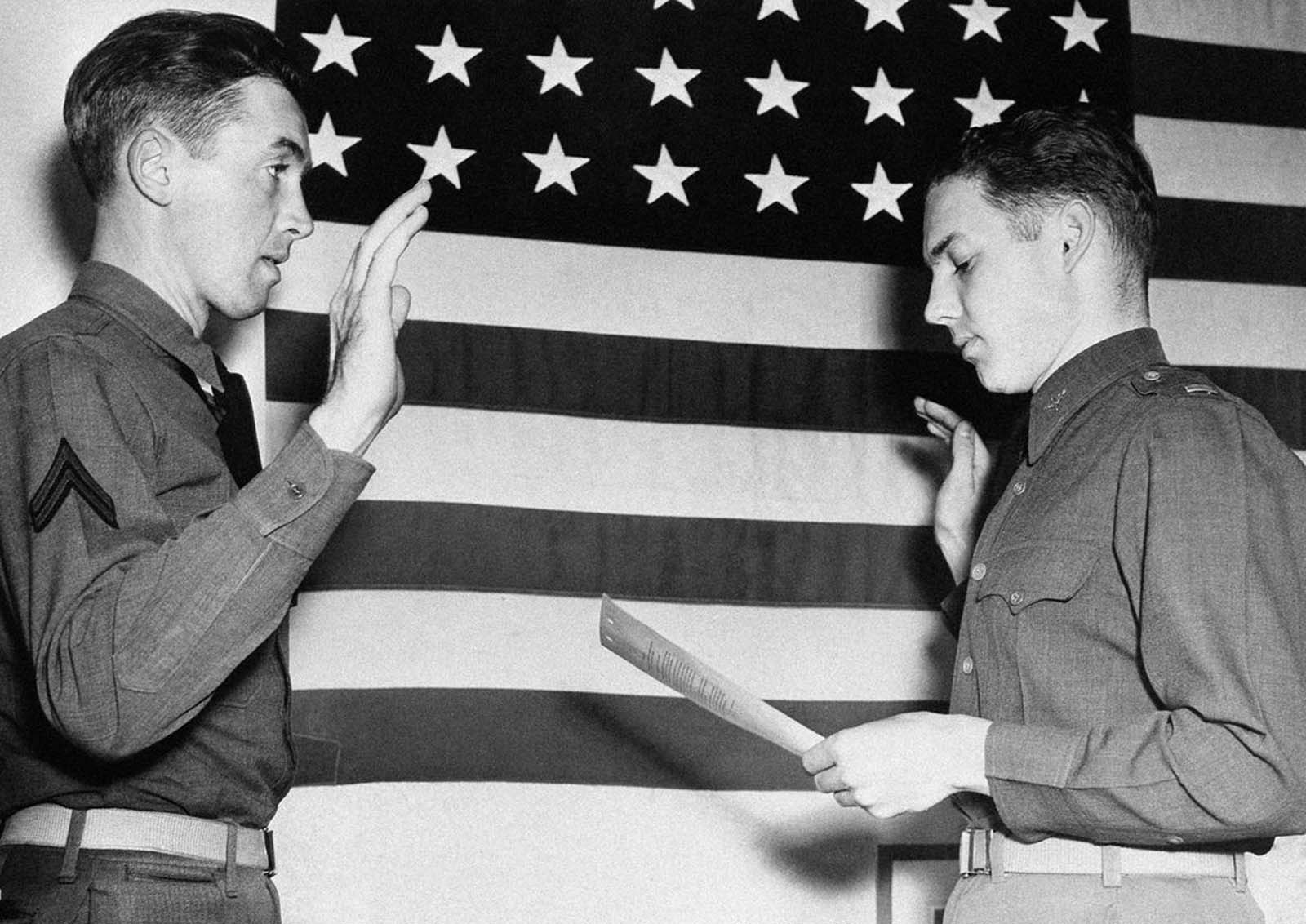
Jimmy Stewart, a former movie star, is sworn in as a lieutenant in the U.S. Air Corps by Lt. E.L. Reid, personnel officer at the West Coast Training Center at Moffett Field, California, on January 1, 1941. Stewart was one of Hollywood’s most popular actors before being drafted into the Army in 1941.
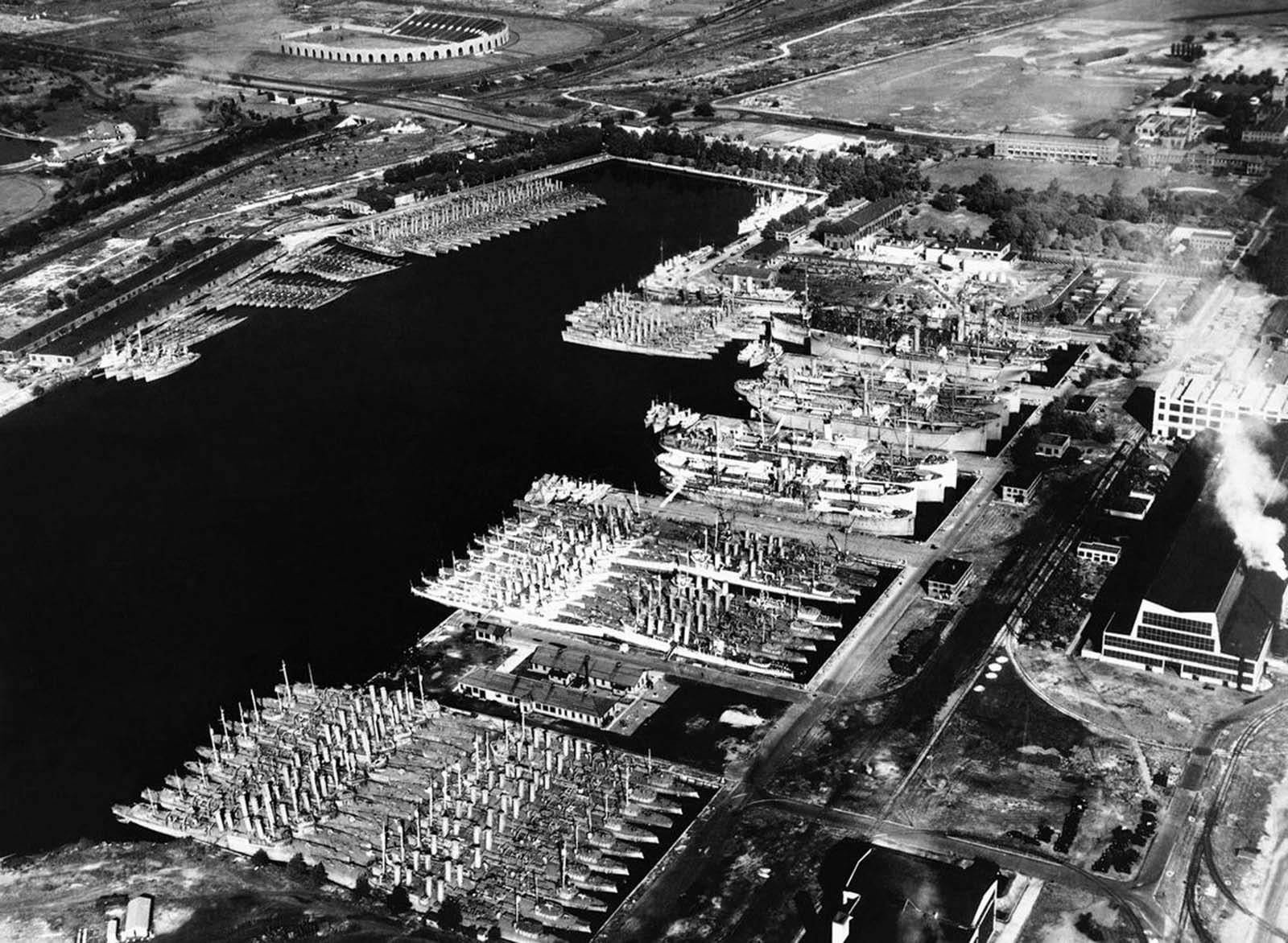
Obsolete but serviceable US destroyers lie in the Back Bay of the Philadelphia Navy Yard on August 28, 1940. Plans were already in place to modernize these ships and transfer them to the Allied nations for defense. These programs, enacted in March 1941 as the Lend-Lease Act, resulted in billions of dollars’ worth of war material being shipped overseas.

A crew of observers on the Empire State Building during a U.S. Army air defense test on January 21, 1941, in New York City. Their task was to detect “incoming enemy” bombers and transmit information to centers requesting interceptor aircraft. The tests, which lasted four days, covered an 18,000-square-mile area in the northeastern states.

On March 19, 1941, U.S. postal workers threw 17 tons of reading material, which postal authorities called propaganda, into a furnace in San Francisco, California. Most of the newspapers, books, and pamphlets originated from Nazi Germany, with some also from Russia, Italy, and Japan.
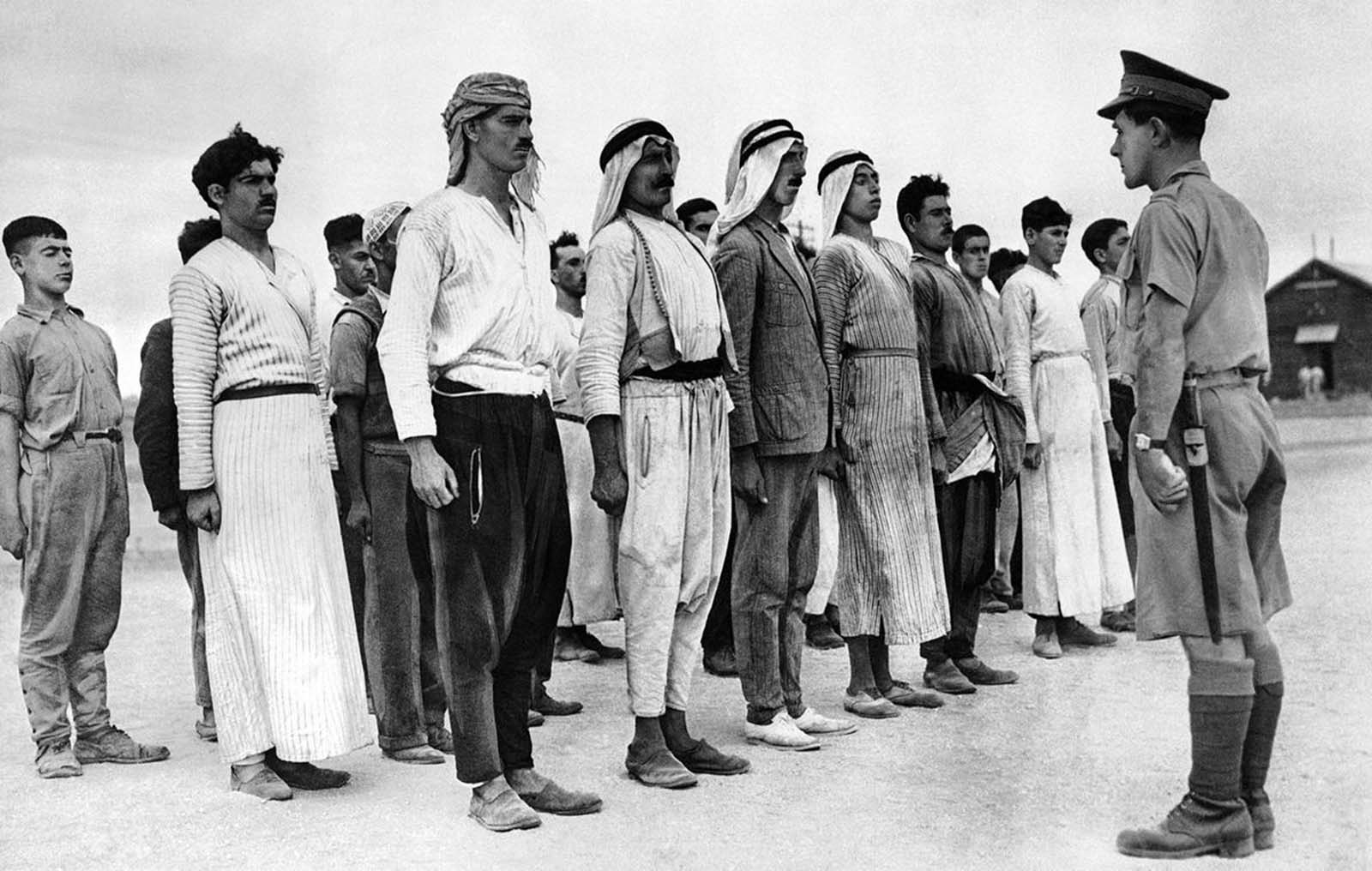
These Arab recruits line up for their first exercise under British instruction in a barracks yard in British Mandate Palestine on December 28, 1940. During the Second World War, approximately 6,000 Palestinian Arabs enlisted in the British Army.
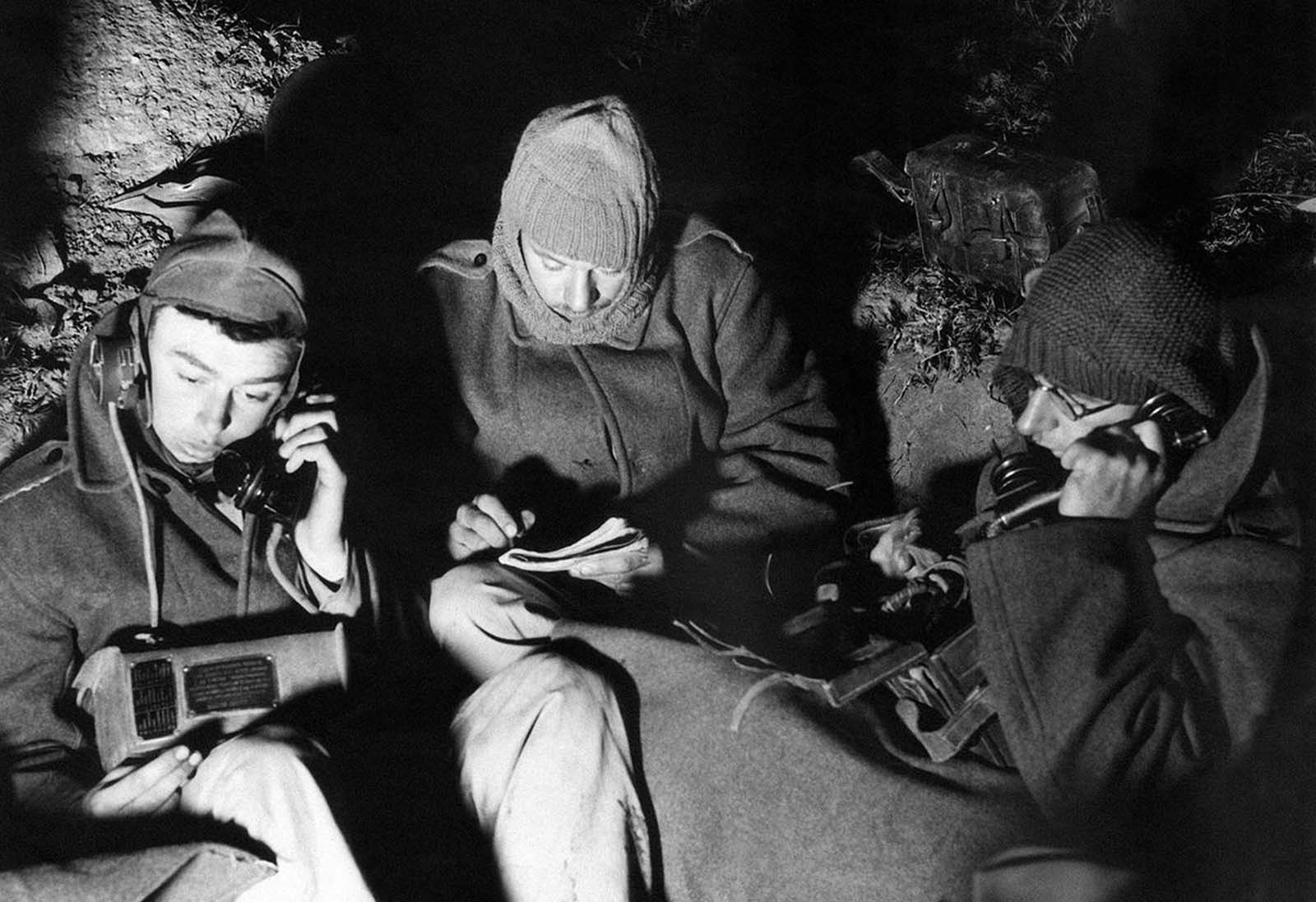
Artillery signallers at dawn in an outpost in Palestine on December 16, 1940. The men dress warmly to ward off the desert cold.
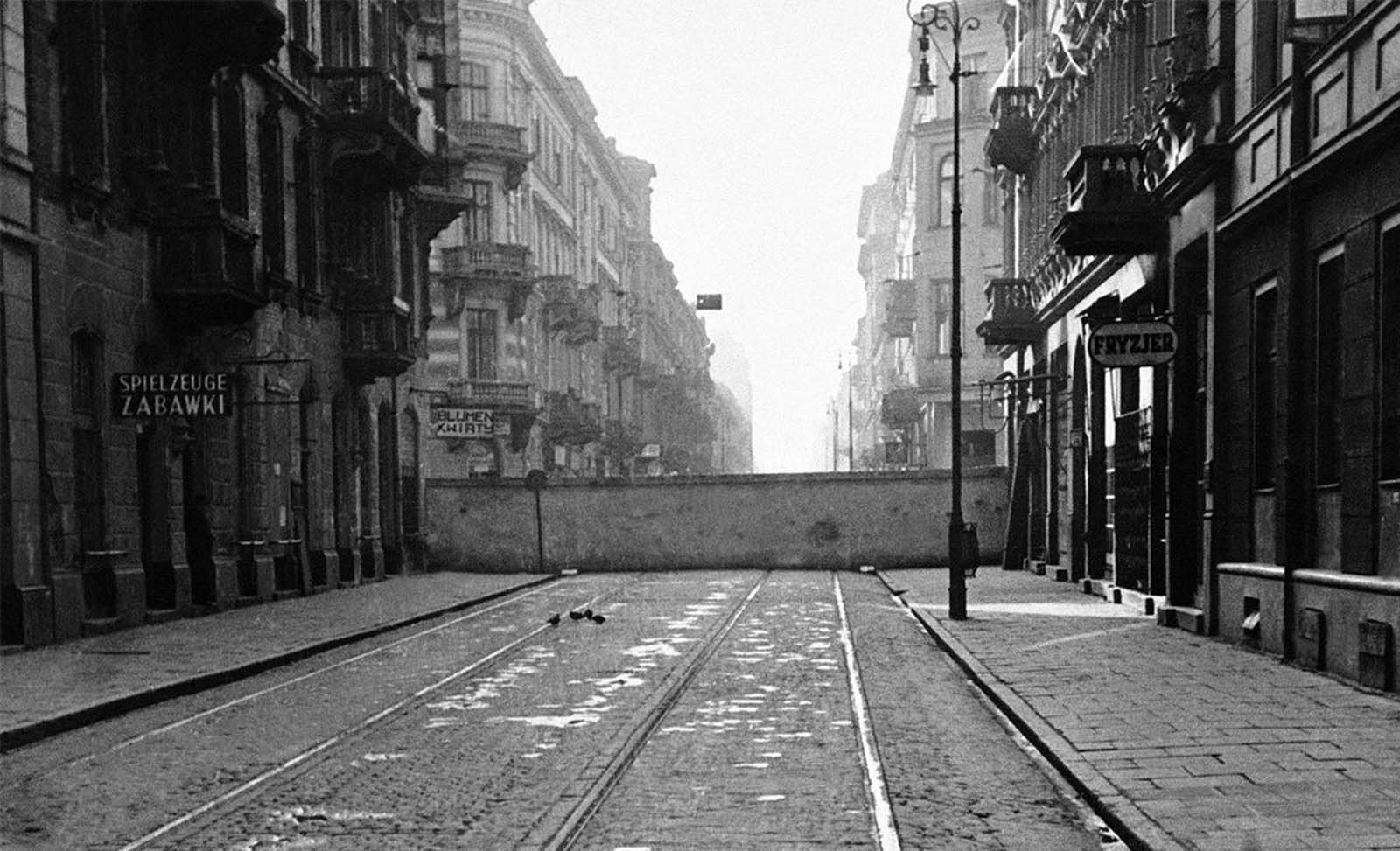
A newly constructed wall divides the central part of Warsaw, Poland, photographed on December 20, 1940. It is part of a 3.6 to 4.5 meter high wall made of red brick and gray stone, built by the Nazis as a ghetto—a holding pen for Warsaw’s approximately 500,000 Jews.

A scene from the Warsaw Ghetto showing Jews wearing white armbands with the Star of David and trams bearing the inscription “For Jews Only” (February 17, 1941).

In December 1940, a German army officer lectures children in a ghetto in Lublin, German-occupied Poland, telling them: “Don’t forget to wash yourselves every day.”
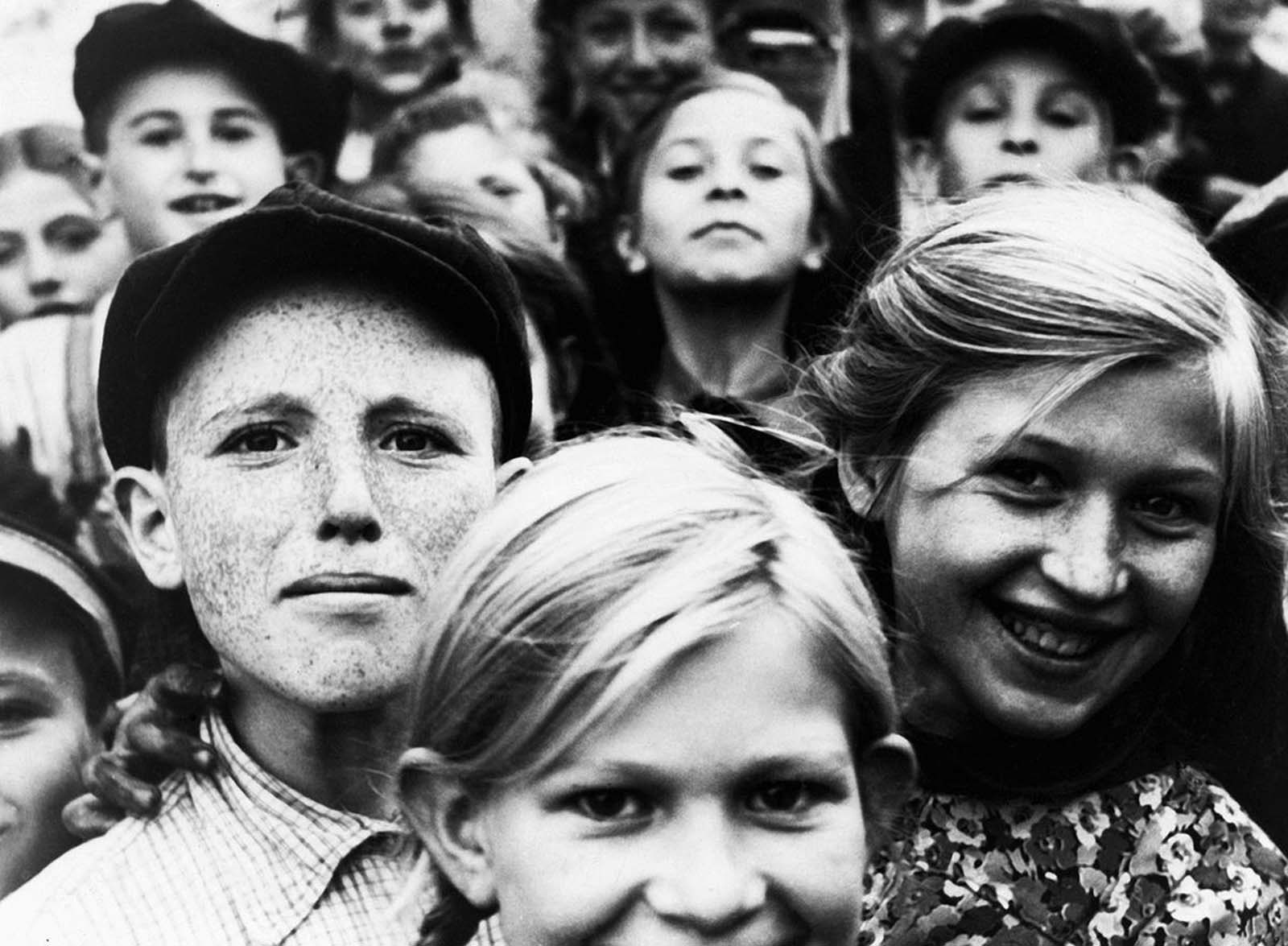
The faces of Jewish children living in a ghetto in Szydlowiec, Poland, under Nazi occupation on December 20, 1940.
